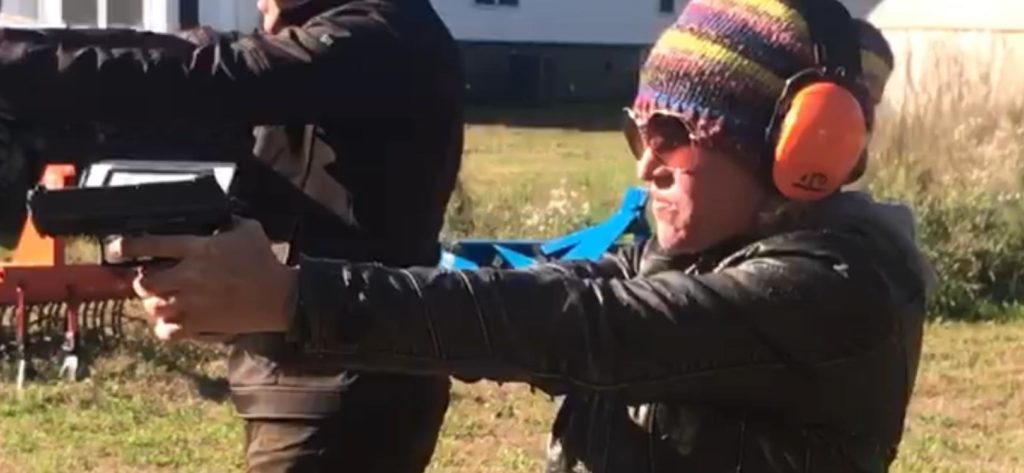With the holiday season approaching, many families will be setting out by car or mass transit to other destinations. Whether to escape the frigid winter or visit family, this escape from routine brings up a few questions to the protection and preparedness mindset. Here’s some common concerns…
IMPORTANT: We are not lawyers and we did not stay at a Holiday Inn Express last night. It REMAINS the reader’s responsibility to determine the legalities of protection tools and actions in the various governing body regions in which they travel.
Can I take my handgun in my vehicle (no CPL)?
In general, the Firearms Owners Protection Act of 1986 created a “Safe Passage” clause in the US Code that allowed for interstate travel with a firearm (unloaded, not accessible to vehicle occupants). The stipulation was that if the firearm was legal to possess at the departure point, and legal to possess at the destination point, then the owner was immune to all strict gun control measures in between. This supposed that the “in between” did not include anything other than brief stops (food, gas, bio-breaks, overnight lodging as necessary).
It should be noted that many over-zealous legislatures and LEO’s have made stops on people, and pressed charges, based on characteristics of the firearm that were made illegal in state/municipality areas. Local laws such as magazine size restrictions, or other firearm features are often attempted to be prosecuted despite the safe passage laws.
If you are traveling, be sure to review the laws in each state you will be traveling through, as well as the levels in which states restrict the rights of the people. Know the laws, know the prescribed method of transport, and drive in such a manner that your “just passing through” goes unnoticed.
Can I take my handgun in my vehicle (with CPL)?
Because each state infringes on the Second Amendment to varying degrees, and because Concealed Pistol Licenses are handled at the state level, navigating where you can and cannot carry concealed with your CPL can be challenging. Many states have ‘reciprocity’ with one another: they will honor your CPL in their state since people from their state have theirs honored while visiting your state. Driver’s licenses enjoy this reciprocity state-to-state throughout the nation. CPL isn’t as encompassing, yet.
To start, look at every single state you will drive through. Then go to a website that is devoted to concealed carry reciprocity and see the results. DON’T STOP THERE. Trusting some web site isn’t the best move in the world. A good reciprocity map will have links to the attorney generals’ opinions from each state granting reciprocity. Review these carefully. Heck, even print them and put them in a small notebook. If you encounter a preference-enforcing government official, you will have access to the determination right there. At the very least, you will be able to demonstrate you did due-diligence before your travels.
IMPORTANT: You must carry concealed in a manner prescribed by the state you are in, and follow THEIR laws when carrying concealed. In Michigan, a “no gun” sign carries little legal weight. You must leave the premises if told to. In some states, that no-gun sign has rule of law. There are many other differences about where, when, and how concealed carry is permitted. You must know them all for each state you travel.
Big ole jet airliner… Flying with your firearm.
In public aircraft (not a private charter airplane), you may obviously not bring your firearm in carry-on with you. You must put in in checked baggage.
The TSA has this to say on the matter:
- Firearms must be unloaded.
- Firearms must be in a locked hard sided case. Only you should have the key.
- Firearms must be declared to the airlines when checking the baggage.
- Ammunition must be in checked baggage only.
- Ammunition must be transported in a box designed to transport ammunition.
Similar to the “Safe Passage” rules above, the firearm must be legal to own at your departure point and at the landing point.
An interesting side note occurs when you must retrieve your baggage by exiting the secured area of the airport, getting baggage, then checking in to a connecting flight (say, 2 different airlines). There have been at least a couple instances were the authorities have been summoned because the firearm had characteristics not legal in that area. Depending on the political climate, this can be as simple as going on your way, or as complicated as “we will be making a lesson of you”.
If your flight has connections that require you to retrieve your checked baggage, understand the procedures for getting your baggage to the new check in area. If the flight is unanticipatedly diverted, talk to the airline crew once you exit the plane to make plans to have your carry-on moved by them, without you reclaiming it at baggage claim.
Always call ahead to your airlines to understand any accommodations that must be made by their policies. In a line at the airport is not a good place for a learn-as-you-go experience.
IMPORTANT: If you regularly use your trusty ole daypack as a range bag, and plan to use it as a carry on, spend a ridiculous amount of time ensuring there is no ammunition in the bag. Too many people are put in small rooms with uncomfortable chairs and subjected to questioning from officials from unfriendly.gov simply because of a few stray rounds of niner mike mike they didn’t shoot up last Saturday…
Do people still take trains?
Trains have a very similar policy as airlines. Firearms must be packaged appropriately, and in checked baggage. Amtrack has guidelines here.
International travel
The USA infringes on peoples’ firearm rights to a lesser extent than most other governments in the world. That being said, there are a number of countries that will honor your ability to own a firearm, though most will not honor your ability to carry it, concealed or otherwise. Costa Rica, Czech Republic, Panama, and South Africa have relatively easy to access CPL requirements.
First, before your departure, understand how to fly with your firearm. You’ll want to declare your firearm to Customs using the Form 4457 and get it signed. This helps your return to the US with that firearm as proof it was not acquired abroad.
Know where the US Embassy is when going abroad, and have that phone number recorded.
Knowledge and skills are not subject to laws
We regularly promote training beyond the gun. Everything from situational awareness to first aid courses to strong physical-level martial classes. These are where protection begins. Awareness gives you the much needed “heads up” something is amiss. Physical force gives you an edge no matter the type of conflict. Whether just confidence (there are nonverbal cues a person who knows how to handle himself gives off), the ability to repel a non-lethal attack, or the skills to get at your firearm in a mixed-force attack, martial skills come into play across the entire use of force spectrum.
These skills prepare you for interpersonal conflict. These cannot be outlawed (knowledge cannot be contained by any government entity). They cannot be seized at the border, and they do not rely on the possession of a thing in order to work (though weapons enhance these skills).

